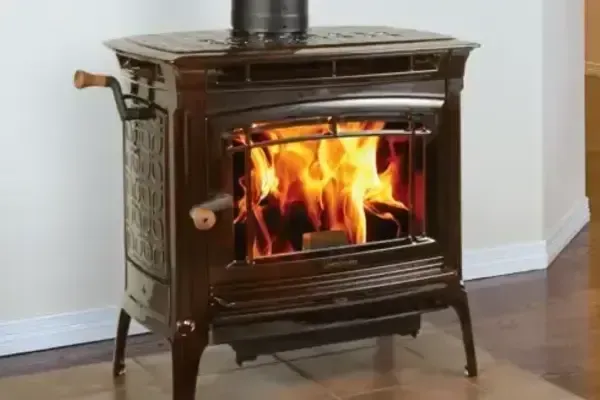
Are Wood Stoves Safe?
Perhaps the question is not “Are wood stoves safe?” but rather “Are properly installed and maintained wood stoves safe?”
There is nothing like the warmth and ambiance that a wood fire creates. It is no wonder some YouTube videos that simulate a wood-burning fireplace have racked up close to 10 million views. Open fireplaces, although beautiful, are known to be drafty and inefficient, with some estimating 90% of your heat goes up your chimney, not into your home. This is why more and more people are turning to modern wood stoves and wood inserts to keep the ambiance of a wood fireplace, as well as the heat it produces.
If there is one question that runs through any potential wood stove buyer’s mind, it’s “Are wood stoves safe?”
The Chimney Works & Rocky Mountain Stoves staff have prepared a list of things to consider when researching this question. Much of this information comes straight from the people who understand the risk the best: Your insurance company.
Would you be without a cooking stove?
Fact: The NFPA says the most dangerous appliance in your home is your cooking stove. Whether electric or gas, your cooking stove is the leading cause of structure fires in America. While this may not alleviate your concerns about the potential dangers of wood stoves, it should help put the risk in perspective.
Safety First
Perhaps the question is not “Are wood stoves safe?” but rather “Are properly installed and maintained wood stoves safe?” Like any appliance in your home, a wood stove is only safe if it is installed properly. In fact, many building codes specifically call out safety parameters for the installation of wood stoves. In my township, we have codes that dictate how your footer (the thing your chimney sits on) should be constructed, as well as the chimney itself. So before you even consider the purchase of a wood stove or insert, you really should consider the existing structure that will hold it. This includes making sure you have the proper chimney liner for your appliance and fuel type.
Never use an unlined single brick masonry chimney with a wood stove
Never use a metal chimney if you are burning coal
Never connect a wood stove to a chimney which is used to vent an oil-burning appliance
Using the proper stainless steel chimney liner for your application is ideal and always chose a UL listed liner
Ensure any stovepipes have the proper clearance (distance from combustible material) – this is typically 18 inches
Stovepipes (thin black metal pipes) should never be run through an interior wall, floor, or ceiling. There are special “Class A” chimney pipes that are built just for this purpose.
Manufacturer’s Instructions
You may find that your wood stove or insert has some very specific installation instructions, oftentimes more strict than your local building codes. Each wood stove is built differently and may require very strict installation procedures, all of which are there for safety reasons. Do not ignore these, as the manufacturer knows exactly how much clearance, ventilation, and surroundings their stove requires. If you are not sure about your stove’s installation, call a professional chimney sweep out to have an inspection done, and share your concerns with them.
Good Burn Habits
Burn only seasoned firewood in your fireplace. If you are not sure what seasoned firewood is, check out our firewood info-graphic. Burning unseasoned wood, trash or anything else in your stove can result in heavy creosote production, and this can lead to chimney damage or chimney fires, which can easily spread to your home.
Annual Inspection
Unlike your cooking stove, your wood stove (rather, your chimney) does require annual maintenance. Call a chimney sweep out every year like clockwork to clean and inspect your chimney. Chimney sweeps use special equipment to clean and inspect your chimney, often spotting small problems that could lead to a fire.
Conclusion
Statistically, a wood stove used for heat is safer than your cooking stove (NFPA). Like all appliances, your wood stove is only safe if it is installed in accordance with your local building codes and your manufacturer’s recommendations. You must properly maintain your wood stove and your chimney to ensure safety. In order to maintain your stove and chimney, call out a chimney sweep once per year and get a cleaning and inspection done. Always burn seasoned wood to ensure minimal creosote build up along with maximum heat output.

